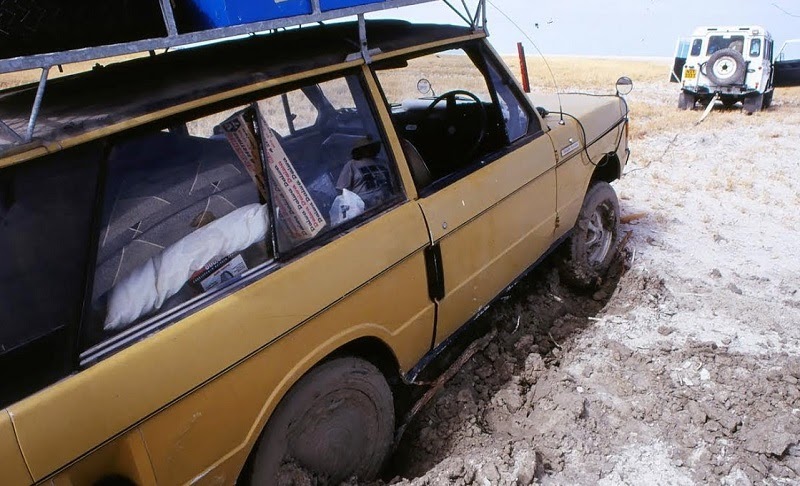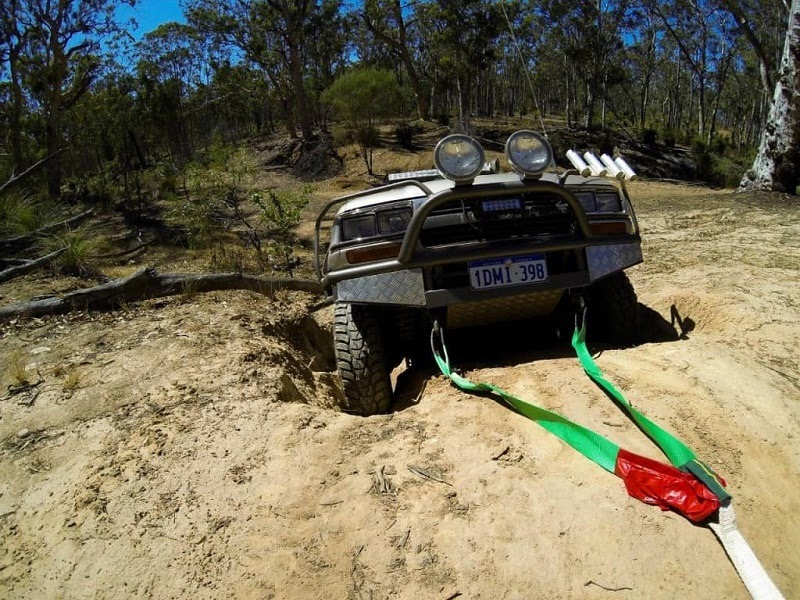Your 4×4 opens up a whole new world of places around Australia to explore, which is one of the reasons why they’re the most popular type of vehicle sold on the Australian market. However, before you pack up and head out to enjoy some of these beautiful, pristine, remote spots, you need to know how to safely, properly and easily recover your 4×4 in the event you get stuck.

For those who have been exploring the vast Australian outback and wilderness for years, you know that there are multiple ways to get a stuck 4×4 moving again. While most types of recovery equipment are easy to use, you need to understand the risks associated with every recovery method.
4×4 Recoveries Can Be Risky
The most important part of recovering a 4×4 vehicle is safety. Safety is constantly being shoved in our faces, and it’s easy to ignore this advice a lot of the times. However, when it comes to recovering a 4×4 vehicle that weighs a few tonnes, it’s no wonder why this is considered the most important part of the whole process.
In the past decade, at least 10 Australians have died in recoveries gone wrong. In a few of those cases, it was innocent people who stopped to provide assistance to people they didn’t even know. So, just think about this for a minute. Recovering a stuck 4×4 requires a lot of force in some occasions, and if something breaks, the results can be fatal. The good news is, as long as you have some basic understanding of the different recovery equipment available on the market and the techniques used to recover your 4×4, the chances of getting injured or worse are extremely low.
Why Do 4x4s Get Stuck?
Your 4×4 can get stuck for a wide range of reasons, but the most common one is improper tyre pressure. When you venture off the road, you should reduce the amount of air in each tyre in order to cushion your ride, increase traction and flotation. This is especially important if you’re traversing beaches or any other type of soft, muddy terrain.
If you’re planning to move through different types of terrain on a single trip, it’s best to take a tyre deflator with you, so that you can adjust your tyre pressure as needed. You could also add a pacesetter y pipe to your vehicle for having a higher exhaust flow to allow more airflow to your engine so it won’t easily get heated when stuck.

Another major reason why many off-roaders get stuck is due to having low clearance. If you don’t have proper clearance, going over something that’s higher than the undercarriage of your vehicle is going to get you stuck. There are several suspension upgrades you can make to improve your 4×4’s clearance. However, even this doesn’t completely guarantee you won’t get stuck.
Understanding the situations that can cause you to get stuck in the first place is essential to choosing the best recovery 4×4 equipment and method.
If You Get Stuck, Don’t Try to Force Your Way Out
This is one of the worst things you can do in such a situation. You can attempt to go back and forth extremely slowly while turning the steering wheel left and right, but trying to spin your wheels quickly will sink you further. And what could have been a simple recovery is now a complicated one.
So How Should You Go About Recovering Your 4×4?
As aforementioned, there are several methods for recovering a 4×4, and you need to invest in quality 4×4 equipment for that purpose. One of the most commonly used recovery methods is with the help of a snatch strap. Snatch straps are simple and easy to use, but pulling your vehicle using them can be quite risky. Most people prefer using a winch or recovery tracks, with a combination of digging around the tyres, using a hi-lift jack and reducing tyre pressure.
So, once you understand the risks associated with every type of 4×4 recovery, the order in which you perform them becomes quite obvious. Start with the safest recovery options, such as reducing the pressure in your tyres. Then, use a shovel or the recovery tracks to clear the area around your tyres, and place the recovery tracks under the tyres to help your vehicle gain traction and momentum. If that doesn’t work, you should consider using a winch. However, in order to use a winch, you’ll need to have a nearby object or another vehicle to latch yourself onto.
High Force Snatch Strap Recoveries
Snatch strap recoveries are also known as high force recoveries, and while they’re considered the riskiest, there’s a time and place where they’re the most suitable option. Winch recoveries can also be high force, but there are less risks associated with them.

The reason why snatch straps are the most popular 4×4 equipment for recovery is their affordability, lightweight and they’re pretty straightforward, at least in theory. Basically, snatch straps are special rated straps that stretch when pulled. This allows your 4×4 to get some momentum before you start getting pulled. This is accomplished by the snatch strap stretching and building up energy as a result, then releasing it in a more gentle manner.
However, when you’re recovering something that weighs a few tonnes, the forces at play can be huge. If anything breaks, the object will flick with speeds of over 400km/h. So even a little piece of plastic or steel can become a deadly object. For that reason, you need to make sure the snatch strap you use is suited to handle the weight of your vehicle. The breaking strain should be two to three times the weight of the lightest vehicle used in the recovery. Snatch straps should never be used in recoveries where the vehicle is badly stuck in mud, as the suction will be too much to break in a quick pull.
Things to Remember When Recovering Your Vehicle

Recovering your vehicle can be a high-stress situation, so don’t rush it, otherwise, you risk making a costly mistake that could have easily been avoided if you were careful. Work as a team with all the people who are around you, and make sure you’re all on the same page. Avoid using snatch straps if possible, as other types of 4×4 recovery equipment involve fewer risks.
Recovery tracks should be your first option, as they’re affordable, compact enough to carry everywhere you go, and some models can double down as shovels. Lastly, consider taking a 4×4 course, where you’ll be shown how to drive your 4×4 off the beaten trail, what to do in the event you get stuck, and how to safely pull yourself out with the right technique.